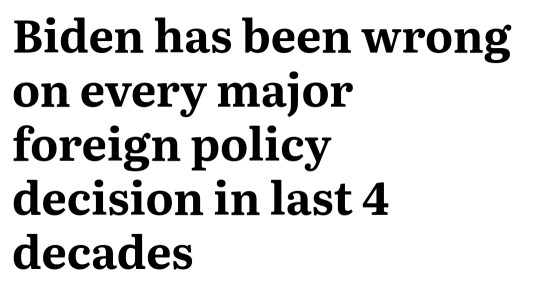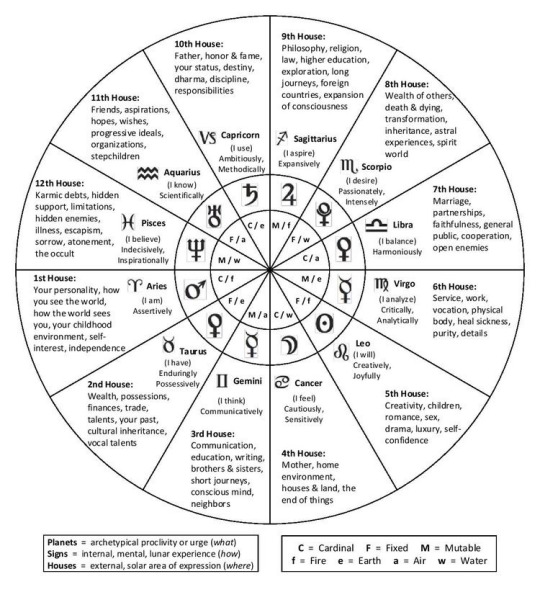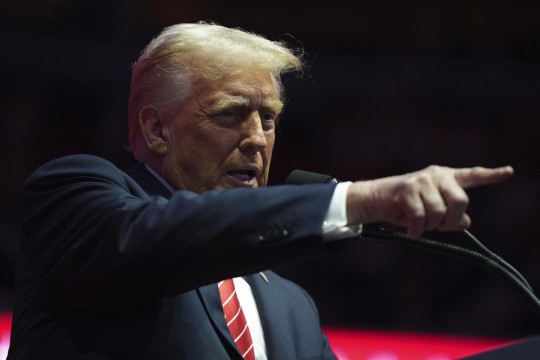#Ministry of Foreign Affairs and Foreign Trade
Explore tagged Tumblr posts
Link
Held yesterday in Delhi, the 2 plus 2 dialogue, serves as a means to discuss and evaluate all dimensions of the India-UK Comprehensive Strategic Partnership.
#India UK 2+2#british ministry of defence#trade#energy#health#civil aviation#technologies#mea india#ministry of external affairs india#maritime security#international cooperation#comprehensive strategic partnership#India UK 2 Plus 2#humanitarian assistance#Foreign and Defence Dialogue#defence dialogue#India UK Dialogue#hadr#fcdo#counter terrorism#news#news update#news blog#blogging
0 notes
Text
Taiwan: Africa Project Brings Growth In Trade, MOFA Says
Concrete outcomes have been achieved through the project, including launching the #Taiwan Representative Office in #Somaliland and reopening the Taipei Representative Office in Ivory Coast, it said.
Continue reading Untitled

View On WordPress
#Africa#Eswatini#Formosa Club#International relations#Ministry Of Foreign Affairs (MOFA)#Project#Somaliland#Taiwan#Trade
1 note
·
View note
Text
History Repeating Itself 💔


Joe Biden’s Role in the Yom Kippur War

Joe Biden had his first meeting with an Israeli leader, Golda Meir, on the eve of the Yom Kippur war, right after meeting with officials in Cairo. During the then junior senator’s meeting with Meir, Biden suggested that Israel make a unilateral withdrawal from settlements for peace, criticizing the settlement policies of the Labor Party, and suggesting they represent a form of “creeping annexation.” Though Biden assured Meir that Egyptian officials were convinced of Israel’s military superiority, 40 days later, Sadat initiated a surprise attack against Israel.
This is the gist of a bombshell tweet from Israel’s Channel 13 reporter Nadav Eyal containing excerpts from a classified memo from an Israeli official who attended that fateful meeting. While it may have been the first meeting between Biden and an Israeli prime minister, it was certainly not the last. In subsequent meetings with Israeli prime ministers, Biden threatened Menachem Begin with withholding U.S. aid, and publicly upbraided Benyamin Netanyahu because it had been announced in a town council meeting that 1600 homes were to be built in future in the Jewish Jerusalem neighborhood of Ramat Shlomo (more about this here).

Joe Biden paints that early meeting with Golda as something precious that cemented in his mind how important Israel is to the Jewish people. It is clear, however, that Joe Biden has always been against the Jewish people settling their indigenous territory. The very thought of Jews planning to build homes in Jerusalem makes him furious. Therefore, contrary to the love fest with Golda he has often described, Biden used the first chance he had to meet with an Israeli prime minister to broach the subject of unilateral concessions.
One wonders how much clout the young senator wielded at that time. Not to mention the timing of subsequent events, with the surprise attack on Israel by Egypt occurring just 40 days after Biden’s meeting with Meir. Is it possible that Golda Meir incurred wider U.S. displeasure by refusing to entertain Biden’s suggestion of unilateral concessions? Was Egypt perhaps emboldened by this state of affairs to attack Israel without fear of American intervention?
During its years in office, Israel fought the 1956 Sinai War, the Six-Day War and the Yom Kippur War. Labor agreed to UN Resolution 242 and the notion of trading land for peace. Nevertheless, successive Labor governments established settlements in the disputed territories and refrained from dismantling illegal settlements, such as those established in 1968 at Qiryat Arba in Hebron by Rabbi Moshe Levinger, and others set up by Gush Emunim. By 1976, more than thirty settlements had been established on the West Bank; however, their population was fewer than 10,000.
"TODAY’S BLOG:
Joe Biden’s Role in the Yom Kippur War
In January 1973, Joe Biden was sworn in as Senator from Delaware.
September of that year found him in the Middle East on a trip to Egypt. Shortly thereafter, Biden was in Israel in a meeting with Israeli PM Golda Meir.
In that meeting, Biden convinced Meir that Egypt would not attack Israel by convincing her that Egypt thought that Israel had absolute military superiority.
The meeting was documented on October 2, 1973 in a secret letter (below) written by Israel Foreign Ministry official Gideon Jordan. Four days later Egypt attacked Israel.
Foreign Ministry official Gideon Jordan summed up Biden’s words as follows: “Of all the personalities (in Egypt) he (Biden) met, he heard that there was not one of them who disbelieved in Israel’s perfect military superiority and therefore stated that it is not possible for Egypt to go to war against Israel now. According to the people he spoke to Egyptians, time will take its course and when God wills, he will find the solution.”
What this letter calls into question is Joe Biden’s extreme misreading of Arab “personalities” and their intentions. His misreading–and that of Israeli intelligence–had disastrous consequences in the Yom Kippur War. One cannot help but think of similar Biden misreadings when it comes to Iran, Lebanon, and elsewhere.
Gideon Jordan later notes in the secret document that Biden was interested in more than Egypt: “The senator repeatedly said that Israel should do a unilateral act, that is to withdraw from some territories, of course not from those territories of strategic importance such as the Golan Heights, Sharm el-Sheikh and the Gaza Strip–but to withdraw without even any negotiations or an agreement with the Arabs.”
Jordan remarks that Meir immediately disagreed with Biden about unilateral withdrawals without achieving true peace. Again, one cannot help but think about the disastrous Biden unilateral withdrawal from Afghanistan, and the unilateral concessions that the U.S. has demanded from Israel in the current Lebanon “agreement” talks.
The secret letter is below for those of you who read Hebrew:


When Biden met Meir: Joe Biden advised Jewish PM to trade land for peace - The Jerusalem Post
Biden meeting between Joe Biden and former Israeli Prime Minister Golda Meir, described in a memo published by Israeli reporter Nadav Eyal, sheds light on the former Vice President's thought process at that time, and what he believed Israel should do shortly before the Yom Kippur war broke out. The meeting took place following his return from Egypt where he discussed with Saadat several things, roughly 40 days before the surprise attack that would turn into the Yom Kippur war.
https://www.jpost.com/us-elections/when-biden-met-meir-joe-biden-advised-jewish-pm-to-trade-land-for-peace-646732

650 notes
·
View notes
Text
Liam Fox

Physique: Average Build Height: 5’ 8" (1.73 m)
Sir Liam Fox (born 22 September 1961) is a British politician who served as Secretary of State for International Trade from 2016 to 2019 and Secretary of State for Defence from 2010 to 2011. A member of the Conservative Party, he has been the Member of Parliament (MP) for North Somerset, formerly Woodspring, since 1992.





Fox studied medicine at the University of Glasgow and worked as a GP and civilian army medical GP before being elected as an MP. After holding several ministerial roles under John Major, Fox served as Constitutional Affairs Spokesman from 1998 to 1999, Shadow Health Secretary from 1999 to 2003, Chair of the Conservative Party from 2003 to 2005, Shadow Foreign Secretary in 2005 and Shadow Defence Secretary from 2005 to 2010.


Lets see… Fox had some scandals in his career. When he was the Shadow Cabinet minister, he was found to have the largest over-claim on expenses and, as a result, was forced to repay the most money. When he was Defence Secretary, a position from which he resigned from over allegations that he had given a close friend, lobbyist Adam Werritty, inappropriate access to the Ministry of Defence and allowed him to join official trips overseas.





He’s married to Dr. Jesme Baird, but there have been gay rumors over his relationship, both personal and political, with Mr Werritty. The much younger guy Fox spends a lot of time with, goes out drinking with, takes trips share hotel rooms with. I don’t want to judge a book by its cover, but I’m thinking there’s something to those gay rumors. I don’t know much else about him except that I want to fuck him. And sometime that’s enough.

82 notes
·
View notes
Text
ASTRO 101 - THE HOUSES (PART II)

SEVENTH HOUSE - I BALANCE
(The Seventh House is ruled by Libra and Venus.)
House of marriage, personality and character of our partner, partner’s job
Civil partnership, bilateral relations, long and committed relationship, close friends, closely associated with, opposite side, associations, union, consultancy
Terms of relationship and behavior
Joint ventures, hostilities, adversary, rivals, competition
Traits we feel lacking in ourselves, the parts of us that are in us but have not been revealed and that we have difficulty in accepting
Lower back, skin, external sexual organs, bladder, ovaries, blood
International relations, military or civil wars, treatises, arbitrators, illegal criminals, marriage and divorce rates, foreign trade, public relations
EIGHTH HOUSE - I DESIRE
(The Eighth House is ruled by Scorpio, Mars and Pluto.)
House of death - natural or unnatural, accident, suicide, fire, drowning, diseases, corruption, crises, surgery
Sex, sexuality, erotism, desire, fantasies, fetishes, sexual life
Alteration and transformations, sharing
Heritage, money that comes to us beyond of our control, money that comes to us from others, inheritance from husband
Tax, alimony, debt, heritage, loan, lottery, gambling
Robbery, fighting, theft, slaughter, butchers, coroners, harassment, rape
The fears, privacy, feel rage towards, abomination
Psychology, occultism, parapsychology, subconscious, spiritual psychology
Genitals, groin area, colon, sex organs, gall bladder, rectum, urogenital system
International debts, international financial agreements, charges, stock certificates, interest rates, foreign exchanges, credits, fuses, mortgages, pension funds, legacies, mortality, life-critical, suicide
Surgery, morgue, surgeons, laboratories, nuclear forces, sewage, organized crimes, terrorists, detective, demimonde, arms, underground sources, cabalistic subjects
NINTH HOUSE - I ASPIRE
(The Ninth House is ruled by Sagittarius and Jupiter.)
House of wisdom, mastership, higher education, academic trainings
Cults and thoughts, abstract reasoning, moral evidence, philosophizing, religious cult, reflection, abstract thoughts
The house where we deepen the information we get from the 3rd house
Distant relatives
Society's mindset, social law rules, social and moral rules, harmony with society
Expedition, long trips, distant travels, foreign countries, foreigners, exterior, crew, communication instruments, media, broadcast
Hips, thighs, sciatic nerves, lower spine, liver, autonomic nervous system
Foreign relations and trade, courts, laws, judges, minorities, companies, advertising portfolios, religion and clergy, the country's philosophical and religious tendencies, migrations, long-distance communications, fast-moving news, broadcasting, popular culture, foreigners
Universities, airlines and transport, maritime transport, ministry of foreign affairs, flight attendants
TENTH HOUSE - I USE
(The Tenth House is ruled by Capricorn and Saturn.)
House of profession, honor, social status, public esteem, dignity, business, character, reputation and career
Glory, name, fame, recognition, way of life, purpose and power
Social roles, status in society, the part of society that sees us, social identity, prestige and title
Marital status, our partner's family, parents, father, authoritarian leaders
Skin, hair, knees, teeth, bones, joints, skeletal system, reputation
Government, the state's reputation by foreign countries, heads of state, powers, executives, leaders, celebrities, notable personages, public figures, uplands
ELEVENTH HOUSE - I KNOW
(The Eleventh House is ruled by Aquarius, Saturn and Uranus.)
House of friends, groups, associations, endowments, a circle of friends, people around us, hives, social environments and organizations
Goals, future plans, hopes, goals of life, wishes, happy news, wealth, fortune, expectations from life and dreams
Income from career, colleagues, international friendships, audiences we offer ideas, incoming wealth, gains, profits, writings
Social media, mass media and virtual communities
Endowments associations, politics, parties, establishment, the masses
Lower leg, calves, ankles, electrical impulsive of the nerves, circulatory system, elimination
Allied countries, social institutions and administrations, legislative changes, national mobilizations, revolts, revolutions, organizations, erosions
TWELFTH HOUSE - I BELIEVE
(The Twelfth House is ruled by Pisces, Jupiter and Neptune.)
House of tribulations, secret matters, troubles, subconscious, covert and covered topics, privacy, loneliness, ermitage, place of isolation
Thoughts, anxieties, and fears underlying repressed consciousness, spiritual life
The things we hide from others and are afraid to tell, our shadow sides, psychological problems
Karmic transmissions, burdens and problems we brought from the past
Secret enemy, backfriend
What kind of pregnancy our mother had, our condition in the mother’s womb and the emotions transferred to us in the mother’s womb
Fantasies and fetishes
Feet, all bodily fluids, the lymphatic system
Secret enemies, secret organizations, private affairs, spies, psychics, fortune-tellers, wizards, deep and secret affairs, criminals, thefts, assassinations, drugs, addicts, dark business people, unemployment and strikes
Hospitals, prisons, rehabilitation centers, mental hospitals, faith houses, orphanages, clinics, charities, overseas

#aesthetic#astrology#birth chart#astro notes#astroblr#astroloji#girlblogger#seventh house#eighth house#ninth house#tenth house#eleventh house#twelfth house#venus#pluto#mars#jupiter#saturn#uranus#neptune#astro houses#astro101#zodiac signs#astro natal#horoscope#libra#scorpio#saggitarius#capricorn#aquarius
201 notes
·
View notes
Text
Brazil hopes to stay off Trump’s radar
Brazilian approach to new U.S. administration will prioritize caution, according to government officials in Brasília

The composition of Donald Trump’s foreign policy team points to increased attention on Latin America during his new term. Brazil could be indirectly impacted by the administration's regional priorities, said people familiar with the matter in Brasília. However, both the Planalto Palace and the Foreign Affairs Ministry believe Brazil stands to gain more by avoiding direct focus from the Republican leader in the coming years.
Foreign Minister Mauro Vieira, special advisor Celso Amorim, and Ambassador Maria Luiza Viotti have already initiated preliminary contact with Mr. Trump’s incoming foreign policy officials: Senator Marco Rubio, set to lead the State Department, and Congressman Mike Waltz, who will head the National Security Council. Described as “positive,” these interactions underscored Brazil’s interest in maintaining cooperative relations with the new administration.
Brazil’s approach to the Trump administration will be characterized by caution. Officials are carefully observing which campaign promises might materialize as concrete policies, with the understanding that a hasty reaction to Mr. Trump’s statements could backfire or create diplomatic challenges.
Historically, Brazil-U.S. relations are described as robust, driven by deep economic and trade ties. Still, concerns linger in Brasília and among business leaders about the lack of high-level dialogue between Presidents Lula and Trump. An initial attempt to arrange a phone call between the two leaders fell through due to scheduling conflicts, but expectations remain that the conversation will happen in the coming weeks.
Continue reading.
#brazil#brazilian politics#politics#united states#international politics#image description in alt#mod nise da silveira
10 notes
·
View notes
Text
Extracts from the book
Robespierre in power was, externally, the same polite and proper provincial lawyer who had come up to Versailles in the wonderful springtime of 1789. Colchen found him "extremely polite" and dressed "in a suit that came from an earlier time." His hair was carefully combed and powdered. "He called me Monsieur and not citizen, and refrained from using the familiar you (tu)." Robespierre listened carefully to Colchen's report, without interruption, for forty-five minutes. The division chief remarks, with obvious satisfaction, that he had been heard "with interest and pleasure." A second interview was then arranged, and it, too, passed with politeness, attention, a flattering interest directed to the reporter, and a formal yet easy sociability made a bit charming by the manners of the ancien régime. The information thus gathered from Colchen, as well as others, would serve as the basis for Robespierre's formidable Rapport of November 17 (27 Brumaire) on "the political situation of the republic". The episode also reveals the conscientiousness with which he worked...
(Jean-Victor Colchen, head of a division in the Ministry of Foreign Affairs, a functionary of the ancien régime who stayed on to serve both the Revolution and Napoleon faithfully - had an interview with Robespierre in November 1793).
...By early December, after nearly five years of struggle, he was in a position to oversee the creation of a republic. Part of the act of creation was returning the government to a constitution, replacing the emergency government he had helped create with the government men had dreamed of, certainly since August 10, perhaps from the beginning of the Revolution. The Revolutionary Government declared by Saint-Just and Robespierre he now conceived as the instrument for the transfer of sovereignty to the people. But the times were not right, the omens were inauspicious. The Revolution had passed, unnoticed by those guiding it, into a juggernaut phase. Its course was determined less and less by the will and reason of men, more and more by la force des choses, complex circumstances set in motion and bound to run their caourse. When this shift occured is a matter of dispute. From the point of view of Robespierre's revolutionary career, October 12, 1793 is a plausible moment.
Shortly after the Convention had determined to try the Girondin deputies long under house arrest in Paris - those who fled would be condemned in absentia - and Marie Antoinette, but before the trials began, Fabre d'Eglantine, a poetaster (and one of the creators of the new revolutionary calendar with its heavy natural symbolism), a dandy, a figure of some importance on the left, a friend of Danton's, and, in Robespierre's bitter characterization, "that artisan of intrigue," began unfolding a "Foreign Plot." Much of the plot derived from Fabre's imagination and exaggeration, much of it from his growing fear that he himself would be found out, his thefts and pettifoggery and connivance at the wholesale misuse of funds belonging to the Compagnie des Indes, the old trading company being dissolved by the Revolution, discovered. If caught, he would go to the guillotine. Rather than lose his own head, Fabre was willing to see others killed, and he provided, through his vile fabrications, a good deal of the fatal evidence. His disclosures inaugurated the war between the factions and, more significantly, revealed the Mountain - the sacred Mountain, in the exalted language of the day - as riddled with scandal. These revelations were profoundly shocking, especially to Robespierre. The discovery of corruption on the Mountain deprived the Revolution of virtue. The people, of course, remained virtuous, but their virtue was passive and dependent upon the Montagnard vanguard for realization. Enlightenment and education and the creation of a democratic republic were the necessary means for releasing this vast potential. Now Fabre had undermined the vanguard.
(Extracts from the book The Revolutionary Career of Maximilien Robespierre by David P. Jordan)
17 notes
·
View notes
Text
As Japan’s newly elected prime minister, Shigeru Ishiba, composes his cabinet, one position remains conspicuously vacant: Minister for Economic Cooperation with Russia. Moscow has noticed, with Russia Ministry of Foreign Affairs spokeswoman Maria Zakharova saying plainly, “If Japan closes ties, we will look for other partners.” Ishiba’s move signals a continued, and potentially more assertive, departure from the brief period of improvement of relations that Tokyo and Moscow enjoyed under Prime Minister Shinzo Abe in the late 2010s. This has since been interrupted by Russia’s invasion of Ukraine. The fact that Ishiba has been sanctioned by Moscow since 2022 does not help matters.
Created in 2016 under Abe, the Minister for Economic Cooperation with Russia has traditionally been held by Japan’s Minister of Economy, Trade, and Industry. It was occupied through Prime Minister Kishida’s tenure, despite calls from lawmakers in both Japan’s ruling Liberal Democratic Party (LDP) and opposition parties to abolish the title. Although largely symbolic, the position’s inception rests in the broader eight-point plan of economic cooperation presented by Abe to Vladimir Putin during the 2016 Russia-Japan Summit in Sochi. The plan was a notable step toward improving relations that had been inflamed following Russia’s invasion of Crimea and eastern Ukraine. This triggered a slew of retaliatory measures by Japan, including the freezing of agreements on investment, visas, and security.
Beyond moving to improve economic relations, the summit eased tensions surrounding Japan’s Northern Territories, the contested Kuril Islands claimed by Japan but administered by Russia since the Soviet occupation during World War II. The Russian program allowing visa-free access to the islands by its former Japanese residents was expanded, and more Japanese citizens were allowed access to visit the graves of their family members, a point of domestic political contention in Tokyo that Ishiba highlighted during his campaign.
The progress on the issue of the Northern Territories supported efforts for the establishment of a peace treaty between Moscow and Tokyo, which would formally end post-World War II hostilities and settle the issue of the sovereignty of the islands. Although no treaty was signed as a result of Abe’s efforts, Russia-Japan trade and visits to the Northern Territories continued mostly unimpeded until Russia’s invasion of Ukraine in 2022, despite several minor diplomatic rows.
Under Prime Minister Kishida, Japan joined the West’s sanctions regime against Russia, triggering a major diplomatic fallout between Moscow and Tokyo. Within a month of the invasion, Russia suspended all talks relating to a peace treaty with Japan. It halted visa-free access for former Japanese residents of the Northern Territories, alongside disruptions to trade due to sanctions and Japan’s downgrading of Russia’s ‘most favored nation’ status.
Although not wholly indicative of Russia’s diplomatic posture, former Russian president turned deputy chairman of Russia’s National Security Council Dmitry Medvedev proclaimed that the issue of the Northern Territories was “closed once and for all” and that those upset in Japan should “end their life in the traditional Japanese way, by committing seppuku.”
The growing division in Russia-Japan relations was accompanied by stronger bilateral relations between the United States and Japan, as the two countries pledged several new points of cooperation during Kishida’s state visit in April. Notably, both countries enhanced their defense partnership by agreeing to upgrade and modernize their Command and Control systems, including the long-awaited establishment of the Japan Self-Defense Forces Joint Operations Command. This new command structure aims to unify and oversee all SDF joint operations, complementing the restructured Joint Force Headquarters with US Forces Japan. The two countries also recently established the Defense Industrial Cooperation, Acquisition, and Sustainment Forum, which enables U.S. and Japanese officials and business leaders to discuss areas for closer industrial cooperation.
In addition to stronger bilateral defense ties, Japan has also increased its multilateral engagement with NATO. Since the 2022 NATO summit in Madrid, Kishida has participated in every successive NATO summit to identify areas of mutual security interests. Most recently, following the 2024 NATO Summit in Washington, DC, NATO and Japan agreed to enhance cooperation in cyber defense, emerging technologies, maritime security, and resilience under the Individually Tailored Partnership Programme.
Ishiba took an aggressive posture toward Moscow during his campaign to become the leader of the LDP in September. He articulated his foreign policy vision in comments to the Hudson Institute, recognizing a growing partnership between Pyongyang and Moscow and emphasizing the need for new methods of deterrence against Russia, China, and North Korea. Additionally, in response to several incursions by Russian aircraft last week, Ishiba proposed amending Japanese law to allow Japan’s Self-Defense Forces to fire on aircraft violating Japanese airspace.
During his security-heavy inaugural policy speech to the Japanese Diet this week, Ishiba referenced Russia’s airspace violation, calling it a “serious violation” of Japanese sovereignty. He also committed to continuing Japan’s sanctions regime against Russia over its invasion of Ukraine, echoing earlier statements made by his newly appointed foreign minister.
While recognizing that Japan-Russia relations are tense, Ishiba pledged to continue aiming for a Russia-Japan peace treaty and to resolve the issue of the sovereignty of the Northern Territories. However, as Zakharova’s comments highlight, continued negotiations are unlikely to occur as long as Japan maintains sanctions.
With all indicators pointing to, at minimum, a continuation of the tense diplomatic status quo between Russia and Japan, Ishiba is unlikely to reverse the Kishida administration’s course as long as the Russian invasion of Ukraine continues. His aspirations for a stronger Japanese defense, including the implication of greater deterrence against Russia, indicate further agitation in Moscow as Japanese cooperation with the United States and NATO continues to grow.
Just days into his administration, Ishiba has already drawn the ire of the Russian Ministry of Foreign Affairs—and it likely will not be the last time.
10 notes
·
View notes
Text
Often described as the world’s largest Buddhist monument, Borobudur rises from the jungles of central Java: a nine-leveled step pyramid decorated with hundreds of Buddha statues and more than 2,000 carved stone relief panels. Completed in 835 AD by Buddhist monarchs who were repurposing an earlier Hindu structure, Borobudur was erected as “a testament to the greatness of Buddhism and the king who built it,” says religion scholar and Borobudur expert Uday Dokras.
Though Buddhists make up less than one percent of Indonesia’s population today, Borobudur still functions as a holy site of pilgrimage, as well as a popular tourist destination. But for the Indonesian Gastronomy Community (IGC), a nonprofit organization dedicated to preserving and celebrating Indonesian food culture, Borobudur is “not just a temple that people can visit,” says IGC chair Ria Musiawan. The structure’s meticulous relief carvings, which depict scenes of daily life for all levels of ninth-century Javanese society, provide a vital source of information about the people who created it. Borobudur can tell us how the inhabitants of Java’s ancient Mataram kingdom lived, worked, worshiped, and—as the IGC demonstrated in an event series that ended in 2023—ate.
The IGC sees food as a way to unite Indonesians, but the organization also considers international gastrodiplomacy as a part of their mission. Globally, Indonesian food is less well-known than other Southeast Asian cuisines, but the country’s government has recently made efforts to boost its reputation, declaring not one, but five official national dishes in 2018. To promote Indonesian cuisine, the IGC organizes online and in-person events based around both modern and historical Indonesian food. In 2022, they launched an educational series entitled Gastronosia: From Borobudur to the World. The first event in the series was a virtual talk, but subsequent dates included in-person dinners, with a menu inspired by the reliefs of Borobudur and written inscriptions from contemporary Javanese sites.
In collaboration with Indonesia’s Ministry of Foreign Affairs and other partner organizations, the first meal in the Gastronosia series was, fittingly, held at Borobudur, with a small group of guests. The largest event, which hosted 100 guests at the National Museum in Jakarta, aimed to recreate a type of ancient royal feast known as a Mahamangsa in Old Javanese, meaning “the food of kings.” The IGC’s Mahamangsa appeared alongside a multimedia museum exhibition, with video screens depicting the art of ancient Mataram that inspired the menu and displays of historical cooking tools, such as woven baskets for winnowing and steaming rice. Another event, held at Kembang Goela Restaurant, featured more than 50 international ambassadors and diplomats invited by the Ministry of Foreign Affairs.
But how does one translate 1,000-year-old stone carvings into a modern menu that’s not only historically accurate, but appetizing? “We have to have this very wide imagination,” says Musiawan. “You only see the relief [depicting] the food…but you cannot find out how it tastes.” The IGC designed and tested a Gastronosia menu with the help of Chef Sumartoyo of Bale Raos Restaurant in Yogyakarta, and Riris Purbasari, an archaeologist from the Central Java Province Cultural Heritage Preservation Center, who had been researching the food of Borobudur’s reliefs since 2017.
The range of human activities depicted in the reliefs of Borobudur is so wide that it has inspired research in areas of study stretching from music to weaponry. There have even been seaworthy reconstructions based on the “Borobudur Ships” displayed on the site’s lower levels, exquisitely rendered vessels like the ones that facilitated trade in ancient Southeast Asia. So it’s no surprise that Borobudur has no shortage of depictions of food-related scenes, from village agricultural labor, to the splendor of a royal Mahamangsa, to a bustling urban marketplace. Baskets of tropical fruit, nets full of fish, and even some modern Indonesian dishes are recognizable in the reliefs, such as tumpeng, a tall cone of rice surrounded by side dishes, which is still prepared for special occasions. Some images are allegories for Buddhist concepts, providing what Borobudur archaeologist John Mikic called “a visual aid for teaching a gentle philosophy of life." Uday Dokras suggests that these diverse scenes might have been chosen to help ancient visitors “identify with their own life,” making the monument’s unique religious messaging relatable. The reliefs illustrate ascending levels of enlightenment, so that visitors walk the path of life outlined by the Buddha’s teachings: from a turbulent world ruled by earthly desires at the lowest level, to tranquil nirvana at the summit.
Musiawan says that the IGC research team combined information from Borobudur with inscriptions from other Javanese sites of the same era that referenced royal banquets. While Borobudur’s reliefs show activities like farming, hunting, fishing, and dining, fine details of the food on plates or in baskets can be difficult to make out, especially since the painted plaster that originally covered the stone has long-since faded. Ninth-century court records etched into copper sheets or stone for posterity—some accidentally uncovered by modern construction projects—helped fill in the blanks when it came to what exactly people were eating. These inscriptions describe the royal banquets of ancient Mataram as huge events: One that served as a key inspiration for the IGC featured 57 sacks of rice, six water buffalo, and 100 chickens. There are no known written recipes from the era, but some writings provide enough detail for dishes to be approximated, such as freshwater eel “grilled with sweet spices” or ground buffalo meatballs seasoned with “a touch of sweetness,” in the words of the inscriptions, both of which were served at Gastronosia events.
Sugar appears to have been an important component in ancient Mataram’s royal feasts: A survey of food mentions across Old Javanese royal inscriptions revealed 34 kinds of sweets out of 107 named dishes. Gastronosia’s Mahamangsa ended with dwadal, a sticky palm-sugar toffee known as dodol in modern Indonesian, and an array of tropical fruits native to Java such as jackfruit and durian. Other dishes recreated by the IGC included catfish stewed in coconut milk, stir-fried banana-tree core, and kinca, an ancient alcohol made from fermented tamarind, which was offered alongside juice from the lychee-like toddy palm fruit as an alcohol-free option.
Musiawan describes the hunting of animals such as deer, boar, and water buffalo as an important source of meat in ninth-century Java. Domestic cattle were not eaten, she explains, because the people of ancient Mataram “believed that cows have religious value.” While Gastronosia’s events served wild game and foraged wild greens, rice also featured prominently, a key staple in Mataram that forms the subject of several of Borobudur’s reliefs. It was the mastery of rice cultivation that allowed Mataram to support a large population and become a regional power in ninth-century Southeast Asia. Rice’s importance as a staple crop also led to its inclusion in religious rituals; Dokras explains that in many regions of Asia, rice is still an essential component of the Buddhist temple offerings known as prasad.
The indigenous Southeast Asian ingredients used in Gastronosia’s Mahamangsa included some still widely-popular today, such as coconut, alongside others that have fallen into obscurity, like the water plant genjer or “yellow velvetleaf.” Musiawan acknowledges that modern diners might find some reconstructed ancient dishes “very, very simple” compared to what they’re used to “because of many ingredients we have [now] that weren’t there before.” But in other cases, ninth-century chefs were able to achieve similar flavors to modern Indonesian food by using their own native ingredients. Spiciness is a notable example. Today, chillies are near-ubiquitous in Indonesian cuisine, and Java is especially known for its sambal, a spicy relish-like condiment that combines pounded chillies with shallots, garlic, and other ingredients. But in ancient Mataram, sambal was made with native hot spices, such as several kinds of ginger; andaliman, a dried tree-berry with a mouth-numbing effect like the related Sichuan pepper; and cabya or Javanese long pepper. “It tastes different than the chili now,” Musiawan says of cabya, “but it gives the same hot sensation.” Chillies, introduced in the early modern era by European traders, are still called cabai in Indonesian, a name derived from the native cabya they supplanted.
Gastronosia is just the beginning of IGC’s plans to explore Indonesian food history through interactive events. Next, they intend to do a series on the food of ancient Bali. By delving into the historic roots of dishes Indonesians know and love, the IGC hopes to get both Indonesians and foreigners curious about the country’s history, and dispel preconceptions about what life was like long ago. Musiawan says some guests didn’t expect to enjoy the diet of a ninth-century Javanese noble as much as they did. Before experiencing Gastronosia, she says, “They thought that the food couldn't be eaten.” But afterward, “They’re glad that, actually, it's very delicious.”
31 notes
·
View notes
Text
WASHINGTON ― President Joe Biden is hiking tariffs on electric vehicles, semiconductors and several other goods imported from China, escalating a trade war between the two world's largest economies as the U.S. accuses Chinese competitors of unfair practices in industries the U.S. is trying to grow.
The moves, which come amid rising tensions between the U.S. and China, are designed to protect American industries in clean energy that the administration has targeted with major investments to try to catch up with China.
Other goods from China slapped with higher tariffs include solar cells, batteries, battery materials, cranes used at ports, and certain medical supplies, as well as steel and aluminum imported from China.
The Biden administration has for months accused China of unfair trade practices by flooding the global markets with goods at artificially low prices, putting U.S. manufacturing of electric vehicles, microchips and other goods at a steep disadvantage.
Lael Brainard, director of the National Economic Council in the White House, said the objective of the higher tariffs is to "make sure that historic investments in jobs spurred by President Biden's actions are not undercut by a flood of unfairly underpriced exports from China."
Biden, whose administration reviewed the tariff rates over the past year, is keeping intact more than $300 billion in tariffs imposed by former President Donald Trump. Biden will announce the new increases during a White House speech Tuesday.
Some of the tariff hikes include:
Electric vehicles from China: from 25% to 100% beginning this year.
Semiconductors from China: from 25% to 50% by 2025.
Lithium-ion batteries from China used in electric vehicles: from 7.5% to 25% this year.
Solar cells imported from China: from 25% to 50% this year.
Steel and aluminum products: form 0%-7.5% to 25% this year.
Ship-to-shore container cranes imported from China: from zero to 25% this year
Hospital syringes and needles made in China: from zero to 50% this year.
China pushed back strongly against the higher tariffs.
Wang Wenbin, a spokesman for the Chinese Ministry of Foreign Affairs, called the moves "self-defeating" and against the consensus reached last November by Biden and Chinese President Jinping Xi during a summit in San Francisco.
"More importantly, it will harm the world’s green economic transition and climate action," Wenbin said. "We urge the U.S. to stop repairing and digging up the road at the same time, so to speak, and create enabling conditions for China-U.S. climate cooperation and global green transition."
Another ministry spokesman last Friday said, "China will take all necessary measures to defend its rights and interests."
The moves come as Biden is courting the support of working-class voters in Midwest battleground states including Michigan, the center of the U.S. auto industry, for the November election.
Biden is borrowing from the trade playbook of Trump, the Republican presumptive nominee, who routinely raised tariffs on Chinese goods during his four years in office.
"Where have you been for the last three and a half years? They should have done it a long time ago," Trump said Biden's tariffs, speaking outside a New York courtroom, where is attending day 17 of his hush-money trial. "But they've also got to do it on other vehicles, and they have to do it on a lot of other products. Because China's eating our lunch right now."
Biden has sought to differentiate his tariff approach with his predecessor's plan for new tariffs. Biden last month slammed Trump's campaign proposals as "across-the-board tariffs on all imports from all countries that could badly hurt American consumers." Trump has proposed a 60% or more tariff on all Chinese imports and warned the U.S. auto industry will face a "bloodbath" if he loses his election in November.
Biden has staked his economic agenda on reigniting a U.S. manufacturing boom centered on electric vehicles and clean energy.
The Biden administration says it has helped spur more than $860 billion in private investment through legislation passed during Biden's first two years in office that incentivized the manufacturing of electric vehicles, clean-energy products, microchips and other investments.
Brainard said the tariff hikes will "ensure that American businesses and workers have the opportunity to compete on a level playing field in industries that are vital to our future such as clean energy and semiconductors."
Biden called for the tripling of tariffs on steel and aluminum imports from China during a campaign speech last month before the United Steelworkers union in Pittsburgh.
Each of the tariff increases reflect the recommendations of Biden's United States Trade Representative, Katherine Tai, who evaluated the rates as part of a mandatory four-year review.
9 notes
·
View notes
Text

Nick Anderson
* * * *
LETTERS FROM AN AMERICAN
April 17, 2024
HEATHER COX RICHARDSON
APR 18, 2024
Yesterday on the social media site X, formerly Twitter, Miles Taylor wrote: “After 2016, I helped lead the US gov[ernmen]t response to Russia’s election interference. In 2024, foreign interference will be *worse.* Tech[nology is] more powerful. Adversaries more brazen. American public more susceptible. Political leaders across party lines MUST UNITE against this.”
Taylor served as chief of staff in the Department of Homeland Security under Trump.
Today, Catherine Belton of the Washington Post reported on a secret 2023 document from Russia’s Foreign Ministry calling for an “offensive information campaign” and other measures that attack “‘a coalition of unfriendly countries’ led by the United States. Those measures are designed to affect “the military-political, economic and trade and informational psychological spheres” of Russia’s perceived adversaries.
The plan is to weaken the United States and convince other countries, particularly those in the North Atlantic Treaty Organization, that the U.S. will not stand by its allies. By weakening those alliances, Russian leaders hope to shift global power by strengthening Russia’s ties to China, Iran, and North Korea and filling the vacuum left by the crumbling democratic alliances (although it is not at all clear that China is on board with this plan).
According to Belton, one of the academics who advised the authors of the Russian document suggested that Russia should “continue to facilitate the coming to power of isolationist right-wing forces in America,” “enable the destabilization of Latin American countries and the rise to power of extremist forces on the far left and far right there,” increase tensions between the U.S. and China over Taiwan, and “escalate the situation in the Middle East around Israel, Iran and Syria to distract the U.S. with the problems of this region.”
The Russian document suggests that the front lines of that physical, political, and psychological fight are in Ukraine. It says that the outcome of Russia’s invasion of neighboring Ukraine will “to a great degree determine the outlines of the future world order.”
Putin critic Mikhail Khodorkovsky told Belton: “The Americans consider that insofar as they are not directly participating in the war [in Ukraine], then any loss is not their loss. “This is an absolute misunderstanding.”
Media and lawmakers, including those in the Republican Party, have increasingly called out the degree to which Russian propaganda has infiltrated American politics through Republican lawmakers and media figures. Earlier this month, both Representative Michael R. Turner (R-OH), chair of the House Intelligence Committee, and Representative Michael McCaul (R-TX), chair of the House Foreign Affairs Committee, warned about Russian disinformation in their party. Turner told CNN’s State of the Union that it is “absolutely true” that Republican members of Congress are parroting Russian propaganda. “We see directly coming from Russia attempts to mask communications that are anti-Ukraine and pro-Russia messages, some of which we even hear being uttered on the House floor.” When asked which Republicans had fallen to Russian propaganda, McCaul answered that it is “obvious.”
That growing popular awareness has highlighted that House Republicans under House Speaker Mike Johnson (R-LA) have for six months refused to pass a national security supplemental bill with additional aid for Ukraine, as well as for Israel and the Indo-Pacific, and humanitarian aid to Gaza. After the Senate spent two months negotiating border security provisions House Republicans demanded, Republicans killed that bill with the provisions at Trump’s direction, and the Senate then passed a bill without those provisions in February.
Johnson has been coordinating closely with former president Trump, who has made his admiration for Russia and his disregard for Ukraine very clear since his people weakened their support for Ukraine in the 2016 Republican Party platform. Johnson is also under pressure from MAGA Republicans in the House, like Marjorie Taylor Greene (R-GA), who oppose funding Ukraine, some of them by making statements that echo Russian propaganda.
While the White House, the Pentagon, and a majority of both chambers of Congress believe that helping Ukraine defend itself is crucial to U.S. security, Johnson has refused to take the Senate measure up, even though the House would pass it if he did. But as Ukraine’s ability to defend itself has begun to weaken, pressure for additional aid has ramped up. At the same time, in the wake of Iran’s attack on Israel last weekend, Republicans have suddenly become eager to provide additional funds to Israel. It began to look as if Johnson might bring up some version of foreign aid.
But discussions of bringing forward Ukraine aid brought not only Greene but also Thomas Massie (R-KY) to threaten yesterday to challenge Johnson’s speakership, and there are too few Republicans in the House to defend him.
Today, Johnson brought forward not the Senate bill, but rather three separate bills to fund Israel, the Indo-Pacific, and Ukraine, with pieces that House Republicans have sought. A fourth bill will include other measures Republicans have demanded. And a fifth will permit an up-or-down vote on most of the measures in the extreme border bill the House passed in 2023. At the time, that measure was intended as a signaling statement because House Republicans knew that the Democratic Senate would keep it from becoming law.
Johnson said he expected to take a final vote on the measures Saturday evening. He will almost certainly need Democratic votes to pass them, and possibly to save his job. Democrats have already demanded the aid to Gaza that was in the Senate bill but is not yet in the House bills.
Reese Gorman, political reporter for The Daily Beast, reported that Johnson explained his change of heart like this: “Look, history judges us for what we do. This is a critical time right now… I can make a selfish decision and do something that is different but I'm doing here what I believe to be the right thing.… I think providing lethal aid to Ukraine right now is critically important.… I’m willing to take personal risk for that.”
His words likely reflect a changing awareness in Republican Party leadership that the extremism of MAGA Republicans is exceedingly unpopular. Trump’s courtroom appearances—where, among other things, he keeps falling asleep—are unlikely to bolster his support, while his need for money is becoming more and more of a threat both to his image and to his fellow Republicans. Today the Trump campaign asked Republican candidates in downballot races for at least 5% of the money they raise with any fundraising appeal that uses Trump’s name or picture. They went on: “Any split that is higher than 5% will be seen favorably by the RNC and President Trump’s campaign and is routinely reported to the highest levels of leadership within both organizations.”
Nonetheless, Greene greeted Johnson’s bills with amendments requiring members of Congress to “conscript in the Ukrainian military” if they voted for aid to Ukraine.
A headline on the Fox News media website today suggested that a shift away from MAGA is at least being tested. It read: “Marjorie Taylor Greene is an idiot. She is trying to wreck the [Republican Party].” The article pointed out that 61% of registered voters disapprove of the Republican Party while only 36% approve. That approval rating has indeed fallen at least in part because of the performative antics of the extremists, among them the impeachment of Homeland Security Secretary Alejandro Mayorkas that made him the first cabinet officer to be impeached in almost 150 years. Today the Senate killed that impeachment without a trial.
As soon as Johnson announced the measures, President Joe Biden threw his weight behind them. In a statement, he said: “I strongly support this package to get critical support to Israel and Ukraine, provide desperately needed humanitarian aid to Palestinians in Gaza, and bolster security and stability in the Indo-Pacific. Israel is facing unprecedented attacks from Iran, and Ukraine is facing continued bombardment from Russia that has intensified dramatically in the last month.
“The House must pass the package this week and the Senate should quickly follow. I will sign this into law immediately to send a message to the world: We stand with our friends, and we won’t let Iran or Russia succeed.”
LETTERS FROM AN AMERICAN
HEATHER COX RICHARDSON
#Nick Anderson#War in Ukraine#Russia#Putin#the Putin Caucus#corrupt GOP#MAGA Republicans#National Security#strategic alliances#foreign policy
10 notes
·
View notes
Text
ISRAEL REALTIME - "Connecting the World to Israel in Realtime"
Late Night Nov 13
◾️DRONE ATTACK - North - 10:34 PM - False Alarm.
◾️HOSTAGE HORRORS
SMOKING GUN that 100% makes Gaza hospitals a valid military target: IDF Spokesman: “We found evidence that Israeli abductees were kept in the Rantisi hospital.”
- It is estimated that during the stay in captivity a woman in the advanced month of pregnancy gave birth to a baby in captivity.
- Hamas publishes forced video of 19 year old female hostage, the end of the video showing her remains.
- Iraqi resistance published forced video of Elizabeth Churkov, Israeli-Russian-American journalist kidnapped 7 months ago, speaking in Hebrew.
◾️IDF ATTACKS LEBANON… “from the ground”, troops on the ground? Anti-tank fire in response. rab report about an IDF artillery attack on the village of Labuna. Arab report on an attack from a drone in the town of Yaron.
◾️QATAR SAYS… The Qatari Ministry of Foreign Affairs took a hard look at the photos published today by IDF radio showing the "palace" of the Qatari ambassador, located on the beach in Gaza City, after being hit by IDF fire and graffitied with "Nova Hotel" and a Star of David. The Qatari Ministry of Foreign Affairs issued a "strong condemnation".
◾️TRAIN SERVICE… from Sunday traffic will resume at most stations in the Western Negev (with the approval of the security authorities), and will also operate complementary trains between Netivot and Ashkelon. Also, the Yokneam and Kfar Yehoshua stations on the Emek line will be reopened.
◾️JORDAN INFILTRATION… (illegal workers) residents of the kibbutzim Ashdot Ya'akov Ihud, Ashdot Ya'akov Maukhed, Masada, Shaar Golan, Afikim and Beit Zera in the Jordan Valley were instructed to enter their homes due to suspicion of intrusion via the Jordanian border. Security forces arrested a number of suspects who had penetrated the border. Apparently these are job infiltrators.
◾️IRAN GETS $10 B… A senior Iranian official said that $10 billion worth of frozen Iranian funds in Iraq will be deposited at the Trade Bank of Iraq (TBI) and used to purchase goods that are exempted from US sanctions. Due to US banking sanctions on Tehran, Iraq has not been able to make direct payments.
◾️AID… (( WHERE ARE THE BABIES? )) Yesterday, 143 trucks of humanitarian aid entered the Gaza Strip. Egypt announces that 97 humanitarian aid trucks entered today. One source says Gaza will not receive humanitarian aid tomorrow because the trucks that carry the humanitarian aid in Gaza have run out of fuel.
◾️JUDEA-SAMARIA SKIRMISHES… Arab report on an exchange of fire on our forces during operations in and around Qalqilya. 3 terrorists were shot by our forces. Heavy exchange of fire in Tulkarm.
◾️U.S. BASES UNDER ATTACK… this is so regular now no point in sharing more details.
◾️NEWS DEMANDS… Many news organizations, including CNN and the BBC, sent a letter today to Prime Minister Netanyahu and President Al-Sisi, imploring them to allow journalists to enter the Gaza. To date Israel has allowed local media channel representatives and a FoxNews Israeli stringer.
20 notes
·
View notes
Text
Wildfires shift north of LA. Trump threatens Putin. Khamenei denies Iran is weakened. GERMAN IMMIGRATION HELL. Trump orders 'blackout' at CDC, FDA, NIH. What is Bill Gates up to with Trump right now?
Lioness of Judah Ministry
Jan 23, 2025
Wildfires shift north of LA forcing over 50,000 to be under evacuation orders or warnings
A fierce and rapidly spreading wildfire, now known as the Hughes Fire, erupted on Wednesday in the parched landscape near Castaic, California.
The fire has ignited widespread concern, leading to mandatory evacuation orders and warnings affecting more than 50,000 residents in the northern regions of Los Angeles County. Within a short span, the blaze has surged to engulf approximately 9,400 acres, fueled by fierce, gusty winds and extremely dry conditions that characterize this time of year. Alarmingly, the fire remains completely uncontained, with efforts to rein it in still in their infancy. Evacuation mandates have been enacted for nearly 31,000 individuals, while an additional 23,000 residents have been placed under evacuation warnings, urging them to prepare for potential flight from the encroaching flames.
"Settle Now, And STOP This Ridiculous War!": Trump Threatens Tariffs As Russia Sees 'Small' Window For Deal On Ukraine
IT'S ONLY GOING TO GET WORSE...
Russia says there is a 'small' window of opportunity to make a deal with Donald Trump over Ukraine, just one day after the US President threatened to impose sanctions on the Kremlin if Russian President Vladimir Putin refuses to negotiate. "Compared to the hopelessness in every aspect of the previous White House chief (President Joe Biden), there is a window of opportunity today, albeit a small one," Russian Deputy Foreign Minister Sergei Ryabkov told an audience at the Institute for US and Canadian Studies in Moscow, a Russian think tank that focuses on US and Canadian affairs.
Zelensky criticizes West for not breaking all ties with Russia
Ukraine’s leader has claimed that Western intelligence agencies have maintained contacts with Moscow throughout the conflict
Ukraine’s Vladimir Zelensky has criticized the West for maintaining extensive and frequent intelligence-level contacts with Moscow throughout the three years of his country's conflict with Russia. Zelensky made the remarks during the International Media Council at the World Economic Forum in Davos on Wednesday, in response to a question about preparations by US President Donald Trump’s team for a phone call with his Russian counterpart, Vladimir Putin.
EU and UK ‘prepared’ for Trump – Politico
Brussels and London reportedly have “an arsenal of weapons” with which to respond to the new US president’s policies on trade and Ukraine
The European Union and the United Kingdom are well prepared for a possible trade war with the United States, Politico has reported, citing sources familiar with the matter. On his first day back in the White House, President Donald Trump signed an executive order outlining an ‘America First’ trade policy, directing federal agencies to review existing trade agreements with partner countries. Last month, Trump urged the EU to purchase more American oil and gas or face a barrage of tariffs. According to Politico, the European Commission has confirmed that it was taking the offer seriously and would follow up on it.
2 notes
·
View notes
Text






6 October 2024: King Abdullah II and United Arab Emirates President Sheikh Mohamed bin Zayed Al Nahyan held talks that covered the deep-rooted ties between the two countries, as well as regional developments.
During the talks, attended by Crown Prince Hussein, the two leaders affirmed the depth of Jordanian-Emirati relations, as well as keenness to consolidate them to serve mutual interests, and strengthen joint Arab action.
His Majesty and the UAE president witnessed the signing of the Comprehensive Economic Partnership Agreement between the two governments, which aims to enhance economic, trade, and investment relations, create jobs, improve supply chains, and accelerate the growth of priority sectors.
The two leaders stressed the importance of the agreement, which is the result of fruitful economic relations as it provides a broad base of opportunities for future development.
The King expressed hopes that the agreement would contribute to implementing the two countries' shared vision toward sustainable development and economic prosperity, and opening new horizons for economic integration, commending the UAE’s support for Jordan's development efforts.
For his part, Sheikh Mohamed welcomed the signing of the agreement, which is the UAE's first with an Arab country, citing the agreement as a natural development of the brotherly and strategic relations between the UAE and Jordan.
The two leaders also witnessed the signing of the Customs Cooperation and Mutual Administrative Assistance Agreement, signed by the two governments.
The talks also covered areas of bilateral cooperation in economy, investment, sustainable development, food security, and renewable energy, with both leaders expressing keenness to build strategic economic partnerships.
On regional developments, the two leaders stressed the need to step up Arab and international efforts to stop the war on Gaza and Lebanon, protect civilians, and de-escalate the situation in the region.
The two leaders reiterated their firm position in support of the unity, sovereignty, and security of Lebanon, and their support for the Lebanese people.
The talks also focused on ways to step up the humanitarian response to the catastrophe in Gaza.
His Majesty warned of the consequences of continued attacks by extremist Israeli settlers on Palestinians in the West Bank and violations of Muslim and Christian holy sites in Jerusalem.
The two leaders reaffirmed their full support for the Palestinians in achieving their legitimate rights, and working to find a political horizon to achieve just, comprehensive, and lasting peace, on the basis of the two-state solution.
Sheikh Mohamed praised Jordan's historic role in supporting the Palestinian people on various levels, voicing appreciation of the Kingdom's support for the humanitarian response in the Gaza Strip.
Prime Minister Jafar Hassan, Deputy Prime Minister and Foreign Minister Ayman Safadi, Director of the Office of His Majesty Alaa Batayneh, Minister of Industry, Trade, and Supply Yarub Qudah, General Intelligence Department Director Maj. Gen. Ahmad Husni, Jordan’s Ambassador to the UAE Nassar Habashneh, and a number of officials attended the talks.
From the Emirati side, Sheikh Hazza bin Zayed Al Nahyan, deputy ruler of Abu Dhabi; Sheikh Hamdan bin Mohamed bin Zayed Al Nahyan; Sheikh Mohammed bin Hamad bin Tahnoun Al Nahyan, adviser for special affairs at the Ministry of the Presidential Court; and a number of officials attended the talks.
The King and the Crown Prince bid farewell to Sheikh Mohamed bin Zayed Al Nahyan at Marka Airport, as he and his accompanying delegation concluded their visit to Jordan on Sunday evening.
2 notes
·
View notes
Text
King Carl XVI Gustaf & Queen Silvia will carry out a state visit to Singapore on Nov. 19-21
It is the first time a state visit occurs between Sweden and Singapore. However, the King made official visits to Singapore, in 1982 and 1991.
The government will be represented by ministers and state secretaries. About 40 Swedish companies, authorities, universities and other organizations will be part of the business delegation that Business Sweden arranges on behalf of the Ministry of Foreign Affairs.
The purpose of the state visit is to consolidate and develop the good relationship between Sweden and Singapore and strengthen economic and political relations, with a focus on trade, innovation, investment and green transition.
Singapore is ranked as one of the world's most open and business-friendly economies. The favourable geographical location has developed the country into a global hub for international trade and transport. Singapore is also a leading financial centre. Sweden and Singapore have excellent political relations and there is consensus on the importance of a rules-based world order and free trade. There are more than 300 Swedish companies established in Singapore and the trade exchange is extensive. The visit provides an opportunity to further strengthen business and research collaborations in several areas as well as to develop the security policy dialogue.
Translation by me of the official press release published Oct. 11, 2024.
2 notes
·
View notes
Photo










Recagno House
This house was built at 1155 Boulevard Oroño in the city of Rosario as the private residence of the Pablo Santiago Recagno and Josefa Schlieper family. It was designed by architect Ernesto Sackmann and constructed starting from 1910/1911 by the Company of Enrique Taiana and Brother. Its architectural style falls within the period of Eclecticism Academicism.
Currently, it serves as a Provincial School The Recagno House was built by Ernesto Carlos Adolfo Sackmann. For Juan Duggan, he designed the Santa Rita estate. He also designed and renovated several estates for the Unzué family, including La Liebre in General Hornos, Buenos Aires Province.
Source: Alemanes en la Arquitectura Argentina, Deutsch Architektur in Argentinien, pages 162 to 164, coordinated by Magdalena Faillace, curated and main texts by Arq. Ramón Gutiérrez and Arq. Patricia Méndez, German translation by Ruth Schwittay, 1st edition, Buenos Aires, Ministry of Foreign Affairs, International Trade and Worship, year 2010; available at the following link: http://www.academia.edu/7858073/Arquitectura_e_ingenieria_de_Alemania_en_Argentina
The Recagno house is a palacial house in Rosario, Argentina.
For it to work, you should use a 50x40 lot.
I didn't have the floorplan or pictures for the interior, but rebuilt what I could by some old videos.
As always, you will need lots of CC for it to work properly, mostly from Felixandre, TheJim, SYB, Aggresivve Kitty, among others.
Please let me know if you like it with a comment and enjoy :)
https://www.patreon.com/posts/83653801?pr=true
41 notes
·
View notes